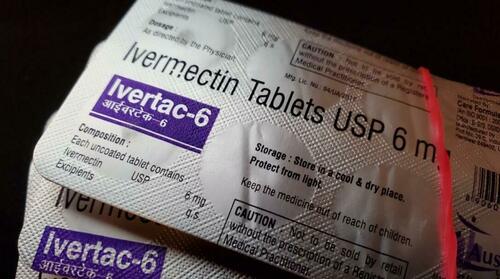Myocarditis & COVID-19 Vaccines: How The CDC Missed A Safety Signal And Hid A Warning
Myocarditis & COVID-19 Vaccines: How The CDC Missed A Safety Signal And Hid A Warning | ZeroHedge
COVID-19 vaccines cause heart inflammation, U.S. authorities
now acknowledge. But after being warned in early 2021 about a "large number" of cases among healthy, young people in Israel after COVID-19 vaccination, authorities did not immediately alert the public while also failing to detect a safety signal that was present in the United States, an Epoch Times investigation has found.

Even after deaths from myocarditis - inflammation of the heart - were reported and myocarditis was designated as a likely side effect of the shots, U.S. officials kept recommending vaccination for virtually the entire populace.
That led to millions of young people receiving a vaccine.
Many of those people suffered.
Aiden Ekanayake, 14
, was one of them. He received a dose of the Pfizer-BioNTech vaccine in May 2021, and a second dose in June 2021.
Two days after the second dose, Aiden was woken in the middle of the night with pain that was comparable to when he tore his anterior cruciate ligament. His mother, Emily, rushed him to the hospital, where he spent days receiving care. Even after he was discharged, his exercise was limited for more than four months.
Ms. Ekanayake trusted the U.S. Centers for Disease Control and Prevention (CDC) before the experience. Now, she does not.
"I hate them. I think they're evil," Ms. Ekanayake told The Epoch Times.
No Transparency
The CDC, America's public health agency, was warned by Israel on Feb. 28, 2021, about a "large number" of myocarditis cases after Pfizer COVID-19 vaccination, documents obtained by The Epoch Times show.
Internally, the warning was designated as "high" importance and set off a review of U.S. data. The review found 27 reported cases in the United States, according to a U.S. government
memorandum dated March 9, 2021. The incidence rate was low, but "missing and incomplete data make it challenging to assess causation," the memo stated. The U.S. Food and Drug Administration (FDA), it said, "has not made a final determination regarding the causality."
 People receive a dose of the COVID-19 vaccine at Tel Aviv Sourasky Medical Center in Tel Aviv, Israel, on Dec. 20, 2020. (Amir Levy/Getty Images)
Weeks later, neither the CDC nor the FDA had alerted the public to the issue,
People receive a dose of the COVID-19 vaccine at Tel Aviv Sourasky Medical Center in Tel Aviv, Israel, on Dec. 20, 2020. (Amir Levy/Getty Images)
Weeks later, neither the CDC nor the FDA had alerted the public to the issue, even after the death of a previously healthy 22-year-old Israeli woman and briefings from Israeli officials and U.S. Department of Defense (DOD) researchers.
Like Israel, the DOD was recording a higher-than-expected number of myocarditis cases. Patients were mostly young, healthy males.
The CDC met with military officials twice behind closed doors in April 2021. Military officials presented data during at least one of the meetings to the CDC. That presentation, which has never been released to the public, "included our preliminary patient data and analysis that suggested to us that myocarditis was indeed a possible side effect to the messenger RNA COVID-19 vaccines (within the US military)," Dr. Jay Montgomery, one of the presenters, told The Epoch Times via email.
The Pfizer and Moderna vaccines use messenger RNA (mRNA).
On April 27, 2021, after the meetings, then-CDC Director Dr. Rochelle Walensky finally
spoke about the matter in public, during a White House briefing.
Dr. Walensky said "we have not seen any reports" of myocarditis after vaccination. That's false, according to CDC data—the agency received 141 reports of myocarditis in the Vaccine Adverse Event Reporting System (VAERS) by the end of March 2021. Another 24 cases were recorded in the Vaccine Safety Datalink, a second system run by the CDC.
Additionally, before the briefing, Dr. Walensky was copied on multiple threads discussing myocarditis and a related condition, pericarditis, including a thread about doctors in California seeing the cases,
internal emails obtained by The Epoch Times show. She responded to one of the threads, saying the information was "super helpful."
"We have not seen a [safety] signal," Dr. Walensky also told reporters during the briefing, "and we’ve actually looked intentionally for the signal in the over 200 million doses we’ve given."
Signal Found
The FDA authorized the Moderna and Pfizer vaccines in late 2020.
The CDC and FDA are supposed to monitor data from VAERS, which officials have described as the country's "early warning system" for possible vaccine problems. But they failed to detect a safety signal for myocarditis after COVID-19 vaccination that triggered on Feb. 18, 2021, when using a statistical analysis method called Proportional Reporting Ratio (PRR), according to
archived VAERS data from the National Vaccine Information Center, The Epoch Times confirmed.
The CDC initially said it started running PRRs in February 2021, but later
acknowledged that was false. The agency now says it did not start PRRs until 2022. The first time the CDC ran complete PRRs, officials
detected a signal for myocarditis, according to files obtained by The Epoch Times.
"It's unimaginable that they wouldn't have seen the signal," Brian Hooker, senior director of science and research at Children's Health Defense, who
detected an early signal for myocarditis in VAERS using a different method, told The Epoch Times. "They were alerted by the DOD. They were alerted by the Israeli Ministry of Health. And so, if they just didn't know then, they have absolutely no excuse because they were warned."
Children's Health Defense, a nonprofit that says its mission is to end childhood health epidemics, first obtained the emails between Israel and the CDC.
Dr. Walensky, who has since departed the CDC, has not responded to a request for comment about her myocarditis claims.
A CDC spokesperson told The Epoch Times via email: "CDC has been continuously monitoring the safety of COVID-19 vaccines since they began to be administered in the United States. At the time of the director’s press conference, CDC did not have sufficient evidence to conclude there was a safety signal for myocarditis following mRNA COVID-19 vaccination."
The CDC has said it did not run PRRs in 2021 because officials were relying on a different analytic method, called Empirical Bayesian data mining. It's unclear when that method, utilized by the FDA, first detected a signal for myocarditis. The FDA has declined to answer questions on the matter. The CDC has told The Epoch Times that its 2022 detection of a signal for myocarditis using PRRs was "consistent with" the data mining results.
Both the CDC and FDA use contractors to process VAERS data.
"Even FDA doesn't really know the mechanics of how its contractor does the data mining," one CDC official said in
an email obtained by The Epoch Times. The official and the FDA did not respond to requests for comment on the email.
A safety signal is a sign that an adverse event may be caused by a vaccine. Authorities say signals can only be substantiated with further research.
"Once the safety signal comes up, why not start warning the public about the fact that' hey, you can take it if you want, but understand that there is this risk that we have discovered and we are looking into it," Dr. Anish Koka, an American cardiologist, told The Epoch Times.
One possible motivation for not fully examining the issue was that it could have led to a halt in vaccination. The CDC and FDA
essentially imposed a pause on Johnson & Johnson's shot on April 13, 2021, after a small number of blood clotting cases.
"A pause of the Pfizer/Moderna administration (much like the J&J blood clot pause) will have an adverse impact on US/CA vaccination rates," one military official
said in a message obtained by The Epoch Times that was flagged for top CDC officials.
Between February 2021 and May 2021, the percentage of the U.S. population that had received a COVID-19 vaccine soared from 14.2 percent to 50.5 percent.
"It was most likely a strategic move in order to make sure that they didn't curtail vaccination rates," Mr. Hooker said.









